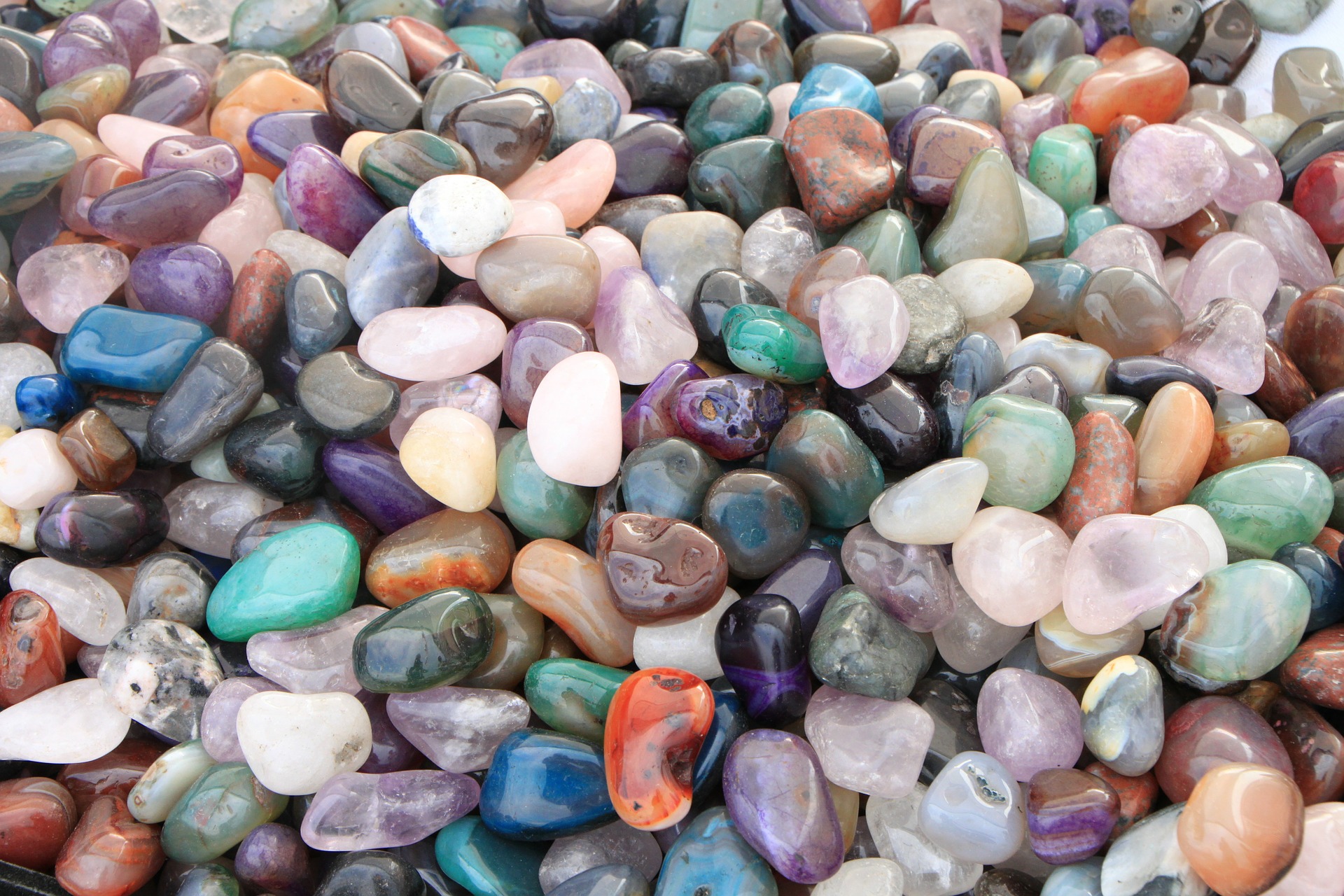

Sulfur is one of the only minerals to be found in its pure form in nature. It is used to make glass, paper, detergents and for softening. Sodium Carbonate (soda ash or trona) is used to control the pH of products. It is also used in medicine due to its anti microbial properties. It is used as currency and in jewelry making. Rare Earth Elements (lanthanum, cerium, praseodymium, neodymium, promethium, samarium, europium, gadolinium, terbium, dysprosium, holmium, erbium, thulium ytterbium and lutetium) Many of these are used to create nuclear power. It is also used in sandpaper and glass making. Silica is used in desiccants to remove moisture from the air. Most importantly today, it is used to make silicon semiconductors. Quartz is used in concrete, glass, scientific instruments and watches. It is the name for a large family of rocks including the jaspers, agates, onyxes and flints. Quartz (silica) is the most abundant mineral on earth. Its byproduct is used in ink and disinfectants. Native Americans polished it to use as a mirror, and it is occasionally used in jewelry. Pyrite is commonly known as ‘fools gold.’ It is frequently seen in granite rocks where it adds sparkle. It is very important in the human body since it works with salt regulating the pressure inside and outside the body’s cell walls. Potassium is a major component in crop fertilizer around the world. Potash is the old fashioned term for Potassium. It has been used in currency, jewelry and eating utensils and is used in alloys as well. Nickel is a common metal in everyday life. This mineral is very flexible, and large sheets of it were used as window glass in the past. Mica is the mineral responsible for putting a sparkle on many rocks. It is essential in the steel making process, and petroglyphs were carved into it in the Southwest. Manganese with iron impurities can be slightly magnetic. Lithium has become very popular with the advent of electric cars. Lithium is used in several applications including medication for bipolar symptoms and batteries. It was at one time used in paint, pencils and eating utensils.
#Gems and minerals skin
It cannot be absorbed by the skin or breathing, but it is harmful if it touches food or drink. Lead has a bad reputation for its poisoning capabilities, some of which may have been exaggerated by fear. It is used in all sorts of construction from vehicles to buildings. Iron Ore is perhaps as important to civilization today as gold historically has been. It is also used to make certain acids, in fire extinguishers and melting ice on the road. Halite (sodium chloride-salt) is used for seasoning food and softening water. It is the most malleable metal which increases the way it can be used. It is used for jewelry, dentistry, electronics and a host of other applications. Gold is the most familiar metal to most people.

It is a brittle metal and resembles iron.įluorite (fluorspar) is commonly used to create fluorescent pigment and since it is very beautiful, it is used for gem material. It has been found in meteorites and is used in invisible ink. The aluminum content in it is leeched from the soil above.Ĭobalt is famous for the incredible blue color it imparts to glass and pigment. It is a soft, white metallic element and alkaline.īauxite is a sedimentary rock that is an important ore of aluminum. Although asbestos has a bad reputation, when polished it becomes the well known and popular ‘Tiger Eye’ stone.īarium is a common element used in x-ray technology, fireworks, rubber and glass making and rat poison. It is a fibrous mineral with incredible fire retarding properties.

Some of the most common ones and their uses are:Īsbestos has an unsavory reputation for causing cancer in people who work around it. Most rocks that we see today are made of minerals (they are the 'ingredients' in rocks) and both precious metals and gems are subsets of minerals. They have a characteristic chemical and physical properties and usually a regular crystal structure. Minerals are solid substances that have formed naturally in the Earth.


 0 kommentar(er)
0 kommentar(er)
